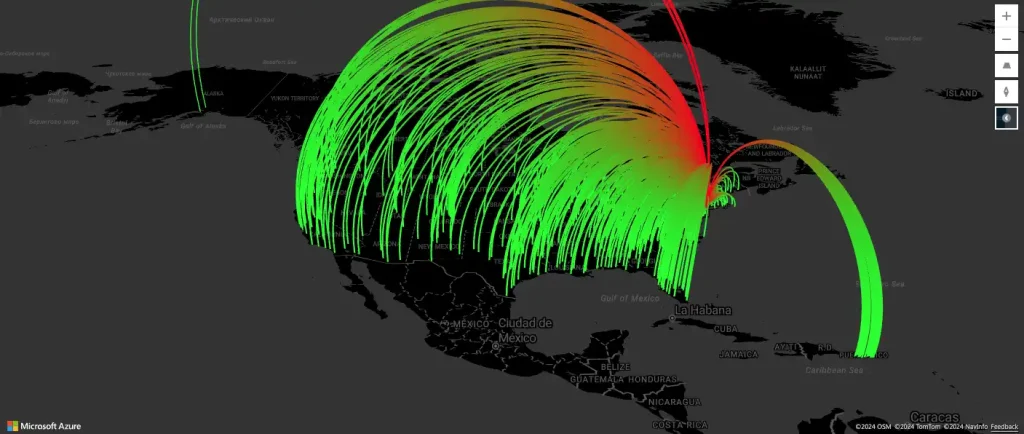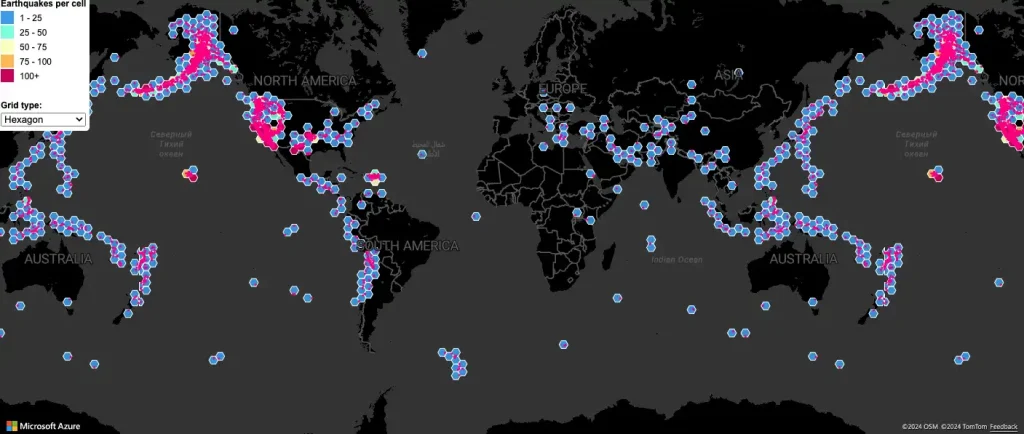Companies in all industries rely on maps and data. Modern technology allows a company’s developers and analysts to obtain valuable insights from digital map platforms. An exciting development in the digital mapping world is data-driven style expressions.
Azure Maps helps revolutionize the way businesses and organizations work with data. In this post, we’ll explain what data-driven maps are and why expressions are beneficial. You’ll also discover the many ways Azure Maps uses data-driven expressions to provide superior insights.
What Are Data-Driven Map Styles?

Maps and data go hand in hand. However, large maps and extensive datasets can make it difficult to uncover the right insights. In these situations, data-driven maps can help provide valuable insights. Data-driven maps utilize technology to present geographical information combined with real-time data.
The Benefits of Data-Driven Maps
Choosing maps and expressions might sound simple. However, these tools can offer incredible benefits for companies, employees, and users. Here are the main benefits of using data-driven maps.
- Extremely Flexible for Developers and Designers: By their nature, data-driven maps provide unmatched flexibility. Developers and analysts have the freedom to choose to include relevant data sources. Designers have the flexibility to choose colors, symbols, and other visual elements to display relevant data.
- Real-Time Data: Using an outdated maps platform can mean manually inputting new data, rendering a map’s previous result obsolete. For situations such as weather information, route updates, and similar scenarios, real-time data is a must. Combining real-time data with data-driven map styles provides unmatched clarity.
- Interactive Data Visualization: Another stand-out advantage of data-driven map styles is interactivity. Depending on a map’s setup, users can zoom in or out, click map elements, or use a wide range of filtering options.
- Layering Abilities: Data-driven maps can rely on layers of information. This feature is great when working with complex or large datasets. Layers let map users focus on specific factors. Layered maps also work well to help generate previously unseen insights.
- Saving Time: Coding is an invaluable way to work with data. But complex coding can burn through a company’s time, money, and resources. Data-driven styles reduce the amount of coding required to gain business insights. These styles can also lower render time.
Examples of Data-Driven Mapping
Businesses from small companies to large-scale enterprises often rely on data-driven maps. Examples of data-driven mapping can include:
- Displaying real-time information about ever-changing weather conditions
- Showing live election-related polling results
- Using data to observe and plan for natural disaster responses
Using Data-Driven Style Expressions in Azure Maps

Key elements of map platforms and development are expressions. Developers can use these expressions with datasets to create data-driven map styles. Here’s more information about expressions Azure Maps can use to generate data-driven maps.
- Data Expressions: Azure Maps uses data expressions to retrieve items from arrays, property values from provided objects, and to get a feature’s ID using data expressions. This maps platform can work with value, string, boolean, and number-based return values for superior flexibility.
- Math Expressions: Math expressions let developers use mathematical operators to calculate within expression frameworks. These expressions can sum, subtract, multiply, and divide data. Azure Maps also offers more complex calculations, such as those required to find absolute values, arccosines, arcsines, and arctangents.
- Layer-Specific Expressions: Azure Maps uses layers as an easy way to create data-driven maps based on datasets. This maps platform also offers layer-specific expressions that enable you to have greater control over presented information.
- Color Expressions: Color expressions are popular in data-driven map styles. For instance, you can use the color red or orange for temperatures above 75 degrees and the color blue for temperatures under 30 degrees.
- Conditional Expressions: You can also create and work with conditional expressions in Azure Maps. This type of logic expression uses like-if statements. You can also use the case expression for if/then/else statements. The match expression is for switch statements.
- Aggregate Expressions: Aggregate expressions utilize boolean or numbers to generate outputs. Creating an aggregate expression in Azure Maps requires an initial value, an operator value, and an expression.
- Boolean Expressions: Using a boolean expression lets you create a statement evaluating data on a true or false basis.
Using Azure Maps to formulate data-driven map styles is an ideal way to work with map-based information. The synergy between style expressions and dynamic maps in Azure Maps offers an easier way to get the most out of your company’s data. Start building for free.

